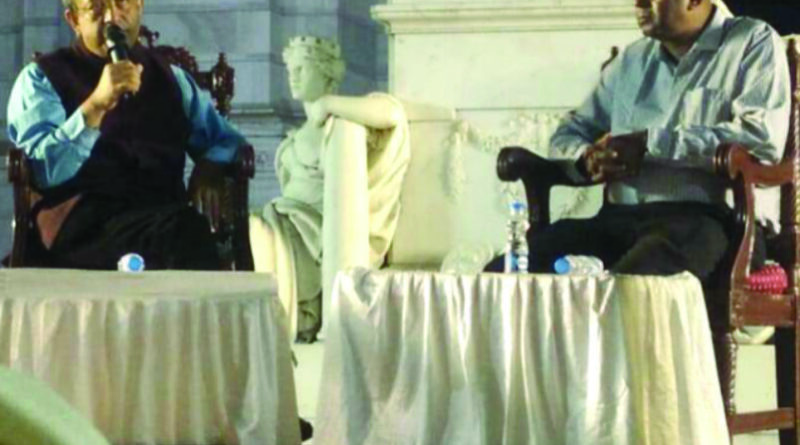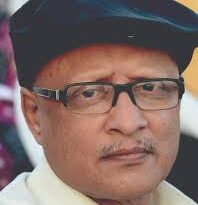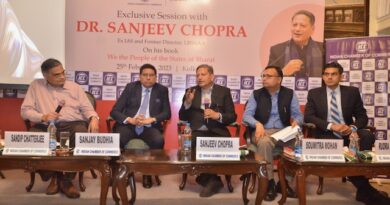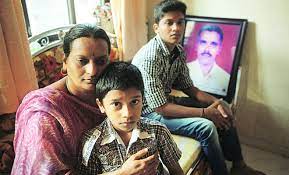Museums Should Focus to Become High Profile: Vinod Daniel
Dr Jayanta Sengupta in conversation with Mr Vinod Daniel (L-R)
Suroopa Chatterjee
The Victoria Memorial, Kolkata which is on its centenary year, this year recently hosted an engaging evening by an internationally acclaimed museum expert Vinod Daniel at the Eastern Quadrangle of the historic landmark on 27th January. With over three decades of experience having worked in almost all major aspects of the museum sector, he spoke about the challenges faced by museums so far and the way forward in a post-Covid era. He is the Chairman of the Board for AusHeritage, Member, International Council of Museums (ICOM, second term), and Chief Executive Officer and Managing Trustee of India Vision Institute.
The Paris based, The International Council of Museums, ICOM (with 45000 members from more than 160 countries) did a survey during October-November, 2020 to analyze responses from around 1000 professionals, 80% of who were direct museum staffers and the rest were consultants and contractors. The survey showed 80% of museums had reopened by November with 82% of staff back at work. 6% of museums had complete closure and 15% job losses. 50% of museums were thinking of cutting work hours for balancing budgets and 70% of museums who responded were government-funded. The hardest impact was felt by non-government aided museums as they relied on visitors and earned revenue loss was 20% for them. One-third museums feel they would get less government funding and 40% feel that there would be a reduction of funding from external sources or companies.
The survey revealed there was a sharp rise in digital activities and social media presence was up by 40% with a 22% increase in live events. Online collections were 20%. The public-funded museums didn’t do too well in this digital switch having fewer programs and lesser trained personnel who could quickly adapt to the changed scenario. 80% of the museums revealed that there was no compromise on collection or security during the phase. A few from the Asia Pacific however felt it was compromised. After museums opened with new norms 96% ensured sanitizers were used and 90% regulated visitor’s entry. One-third of museums feel they would get less government funding and 40% feel that there would be a reduction of funding from external sources or companies.
Mr. Daniel felt that with the GDP having shrunk in most countries, it would be progressively a tough task getting governmental grants. So the focus should be on getting funds from elsewhere he stated. Larger museums backed by governmental grants get anything between 30-70% annually. They have a trust and they source remaining funds from an external source. The Metropolitan Museum is losing almost 25% of its annual budget of 400 million USD. There is a great need for museums to raise funds, even for the ones who report to the government felt Mr. Daniel. Museums should focus on building community engagement programs and think creatively to attract larger audiences and funds.
Digitization proved a boon as it attracted those (particularly the more technology adept age group between 15 to 35) that were earlier shy of making museum visits. Australian museum visits had massive online visits of almost 20 million. Overall digitization has made people friendlier with the online experience and technology. According to Mr. Daniel India with its IT strength and rich heritage of cinema can produce great narratives that could promote art, culture, museums and educate, entertain and attract masses and turn museums into cultural centers. There has to be constant dynamism and variety in the digital presentation through the art of storytelling and entertainment. Earlier museums used to organize blockbuster exhibitions and museums were focused on global audiences. Connecting with the local populace was not a high priority earlier but now the scenario has changed and there is a need to do that.
Challenges that need to be looked into are getting staff to upskill and getting them familiarized with virtual work. The pandemic has woken museum authorities to the fact that one need not be physically present to execute work which may be done remotely from another location. The focus should be on monetizing online activity he feels. And virtual experience can only serve to increase people’s interest in having the real experience in future as studies have revealed. . It’s a good time for museums to put things like photographs, documents and collections in place. Efforts should be made to convert museum focus into a high profile one that reflects through government support and funds.




